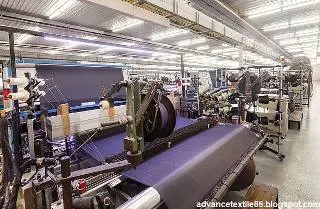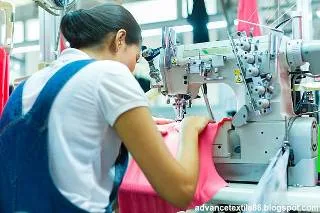Textile industry in Bangladesh
The textile and garment industry provides a single source of growth in Bangladesh's
fast-growing economy. The textile industry
in Bangladesh is the main exports sources of foreign exchange earnings.
Textiles, garments, and ready-made garments (RMG) exports accounted for 77% of
Bangladesh's total exports in 2002. In 1972, the World Bank estimated
Bangladesh's gross domestic product (GDP) at US$6.29 billion and increased to $368 billion by 2021, of which $46 billion came from exports, of which 82%
were readymade garments. As of 2016, Bangladesh's position in garment
manufacturing is second only to that of China. Bangladesh is the world's
second-largest exporter of western fast fashion brands. 60% of Western brand
export deals are with European buyers and about thirty percent with American
buyers and ten percent with others. Only 5% of textile factories are owned by
foreign investors, and most of the production is controlled by local investors. In
the 2016-2017 financial year, the RMG industry generated US$28.14 billion,
accounting for 80.7% of total export earnings and 12.36% of GDP; the industry
also adopted green manufacturing practices.
Textile industry in Bangladesh's prospects
i.
Significantly qualified workforces are available at lower labor charges. The
proposed minimum wages include travel allowance, house rent, medical
allowance, maternity benefits, festival bonus, and overtime benefits in
Bangladesh Export Processing Zones (BEPZ) units. On the other hand, wages
outside BEPZ are about 40% lower. Also are-
ii.
The energy at a low price.
iii.
Easily accessible infrastructure like sea roads, railroads, rivers, and air
communication.
iv.
Accessibility of fundamental infrastructure, which is about 3 decades old, was
mainly established by the Korean, Taiwanese, and Hong Kong Chinese
industrialists.
v.
FDI is legally permitted.
vi.
Moderately open Economy, particularly in the Export Promotion Zones.
vii.
GSP under EBA (Everything but Arms) for Least Developed Country applicable
(Duty-free to EU)
viii.
Improved GSP advantages under Regional Cumulative.
ix.
Looking forward to Duty-Free Excess to the US, talks are on and appear to be on a hopeful track.
x.
Investment assured under Foreign Private Investment (Promotion and Protection)
Act, 1980 which secures all foreign investments in Bangladesh.
xi.
OPIC's (Overseas Private Investment Corporation, USA) insurance and finance
agendas are operable.
xii.
Bangladesh is a member of the Multilateral Investment Guarantee Agency (MIGA)
under which protection and safety measures are available.
xiii.
The adjudication service of the International Centre for the Settlement of
Investment Dispute (ICSID) offered.
xiv.
Excellent Telecommunications network of E-mail, Internet, Fax, ISD, NWD &
Cellular services.
xv.
Weakness of currency against the dollar and the condition will persist to help
exporters.
xvi.
Bank interest@ 7% for financing exports.
xvii.
The convenience of duty-free custom bonded w/house.
xviii.
Readiness of new units to enhance systems and create infrastructure accordantly
with product growth and fast reactions to circumstances.
Problems of the textile industry in Bangladesh
i.
Lack of marketing tactics
ii.
The country is deficient in creativity
iii.
Absence of easily on-hand middle management
iv.
A small number of manufacturing methods
v.
An international pressure group forces local producers and the government to
implement social recognition. US GSP may be canceled and purchases from the US
and EU could be significantly reduced.
vi.
M/c advancement is necessary. The machinery required to assess add-on a garment
or increase competence is missing in most industries.
vii.
Lack of training organizations for industrial workers, supervisors, and
managers.
viii.
The autocratic approach of nearly all the investors
ix.
Fewer process units for textiles and garments
x.
Sluggish backward or forward blending procedure
xi.
Incompetent ports, entry/exit complicated, and loading/unloading takes much
time
xii.
Speed money culture
xiii.
Time-consuming custom clearance
xiv.
Unreliable dependability regarding Delivery/QA/Product knowledge
xv.
Communication gap created by incomplete knowledge of English.
xvi.
Subject to natural calamities.
Women in the textile industry
With
the rise of the textile industry in
Bangladesh, the structure of gender participation in the economy has
undergone a major change. The World Bank estimates the number of women workers
in the industry in the 1980s was 50,000; That number was brought to 2.85
million by 2008 and is now probably above the 3 million mark. Traditionally,
women's participation in the formal economy of Bangladesh has been minimal.
Bangladesh's main export-oriented ready-made garment industry, but with 90
percent employment of women workers was built largely on the supply of cheap
and flexible women workers in the country. By 2001, about 3 million workers
were employed in the textile industry, 90% of whom were women. In 2004, the
garment sector was the largest employer of women in Bangladesh. By 2013, there
were about 5,000 garment factories, employing about 4 million people, mostly
women.
The
garments sector has provided employment opportunities to rural women who had
never had the opportunity to be part of the formal workforce before. It has
given women the opportunity to be financially independent and have a voice in
the family because now they contribute financially. However, women workers face
various problems. Most women come from low-income families. The low wages of
women workers and their compliance have enabled the industry to compete with
the world market. Women are paid much less than men due to a lack of education.
However, the pressure of buyers to comply with the Labor Code has enabled the
factories to maintain satisfactory working conditions.
Present scenario of the textile industry in Bangladesh
Today, developed countries are heavily dependent on developing countries for the manufacture of textiles and garments. At present, with a turnover of $20 billion, Bangladesh is the second-largest garment producer in the world, accounting for 80% of exports. There are three things that have increased the growth of the textiles industry in Bangladesh. The country has a lot of resources, opportunities, and beneficial government policies. A large number of workers can be found in Bangladesh. Also, the cost of natural gas and energy is cheap. With a large population, labor is plentiful, and Bangladesh has an advantage in producing labor-intensive products.
The main reason for the development of the textile industry in Bangladesh is the hard
workforce. They put in more work time to complete the target. Therefore, the
per capita income of the country and the standard of living of the people have
improved in recent times. Second, the country has gained a favorable
opportunity to trade with the US and European countries in the readymade
garments sector.
These
opportunities were supported by government policy that sustained textile growth
in Bangladesh. Liberal government policies promoted investment from abroad. The
garment industry of Bangladesh is famous and occupies a prominent place in the
world market today. The country's textile industry includes specialized textile
products, knitwear, and woven product. These products top the country in terms
of export earnings.
Moreover,
the quota-free textile rule introduced in 2005 has significantly improved the
textile industry in Bangladesh. Government policies that support textiles
include financial benefits and institutional assistance. As mentioned earlier,
labor and energy are cheaper and more readily available here than in India,
Pakistan, or China. This gives them a competitive advantage over their
competitors.
The new textile policy that has been introduced has no tariffs for the spinning
sector. However, imported yarns and materials have higher tax rates to
encourage the use of local fabrics and yarn production. All these issues have
worked together for the development of textiles in Bangladesh. Yet, in the last
ten years, the country has witnessed the growth of the spinning industry.
Conclusion
Bangladesh has come a long way from today's agro-based economy to an export-import-dependent economy. Bangladesh has increased its overseas reserves from $ 270 million (1972) to $ 33000 million (2018) with the help of a nearly 40-year-old textile and garment industry. Even then, there are many opportunities for Bangladesh to grow to its full potential. But today's textile industry is more competitive than ever. Due to this Bangladesh will face some challenges. By solving these problems, Bangladesh can create a technology-based garment industry and be a leader in this sector as it is a country with a huge youth population. All things considered, we can say that Bangladesh has a bright future in the textile and garment industry.











0 Comments